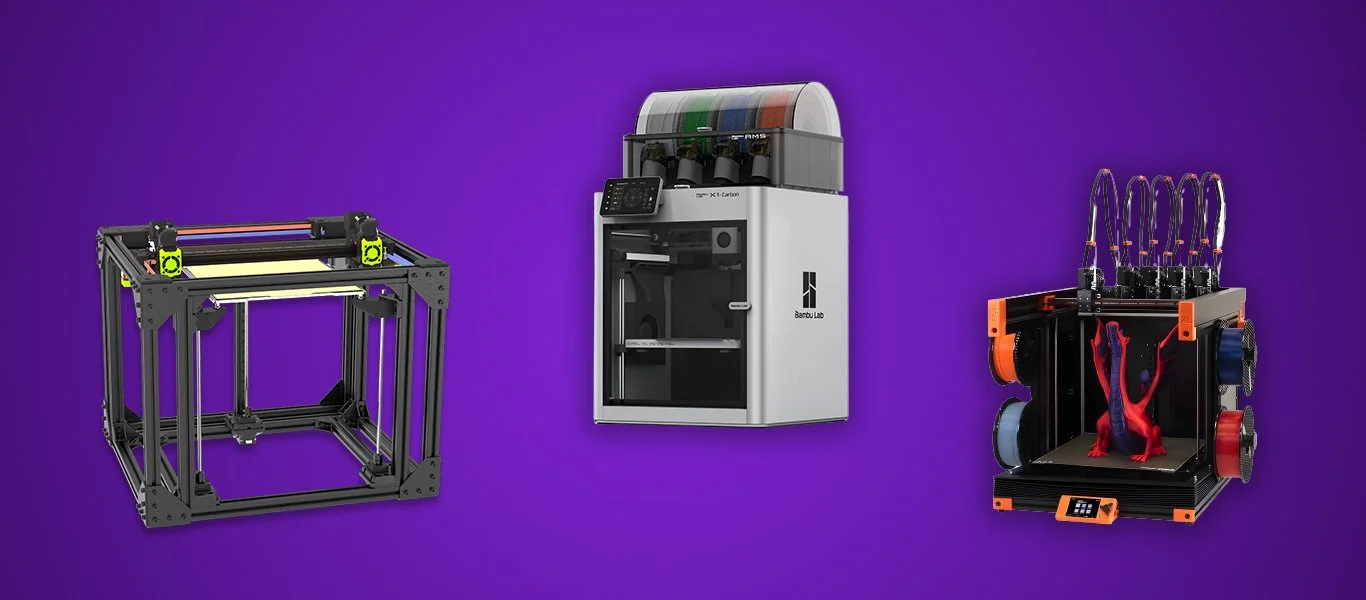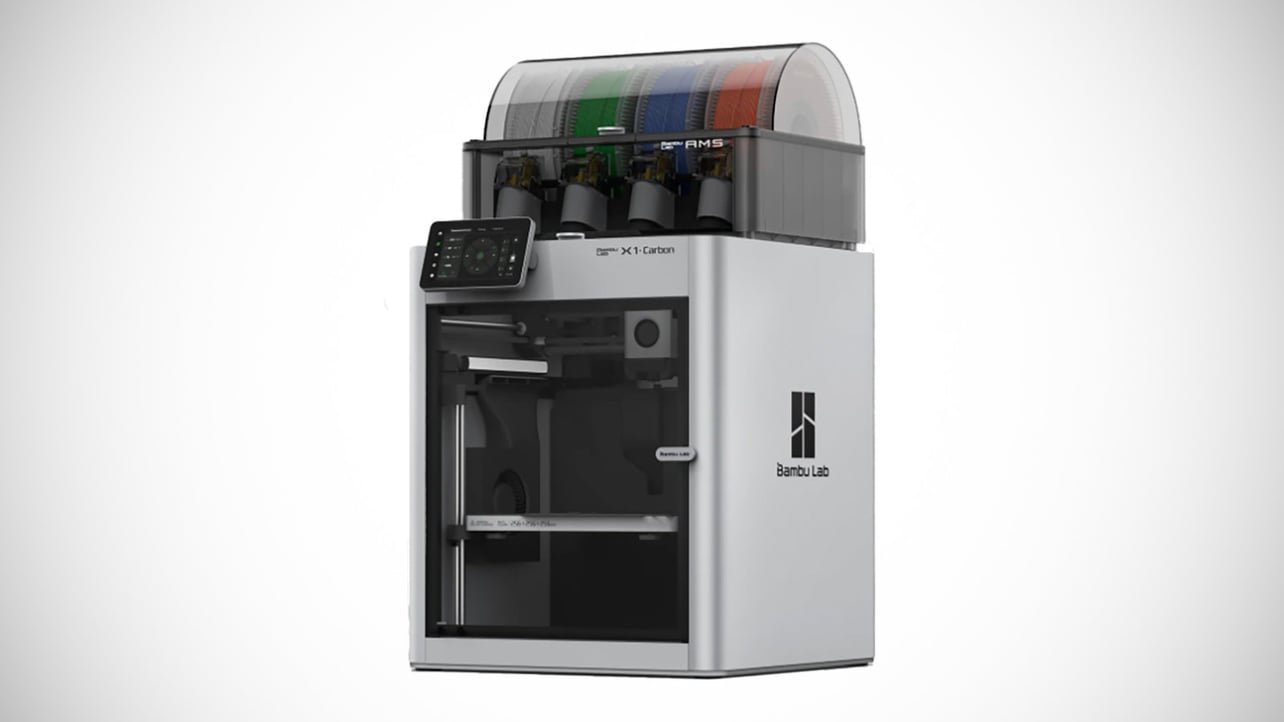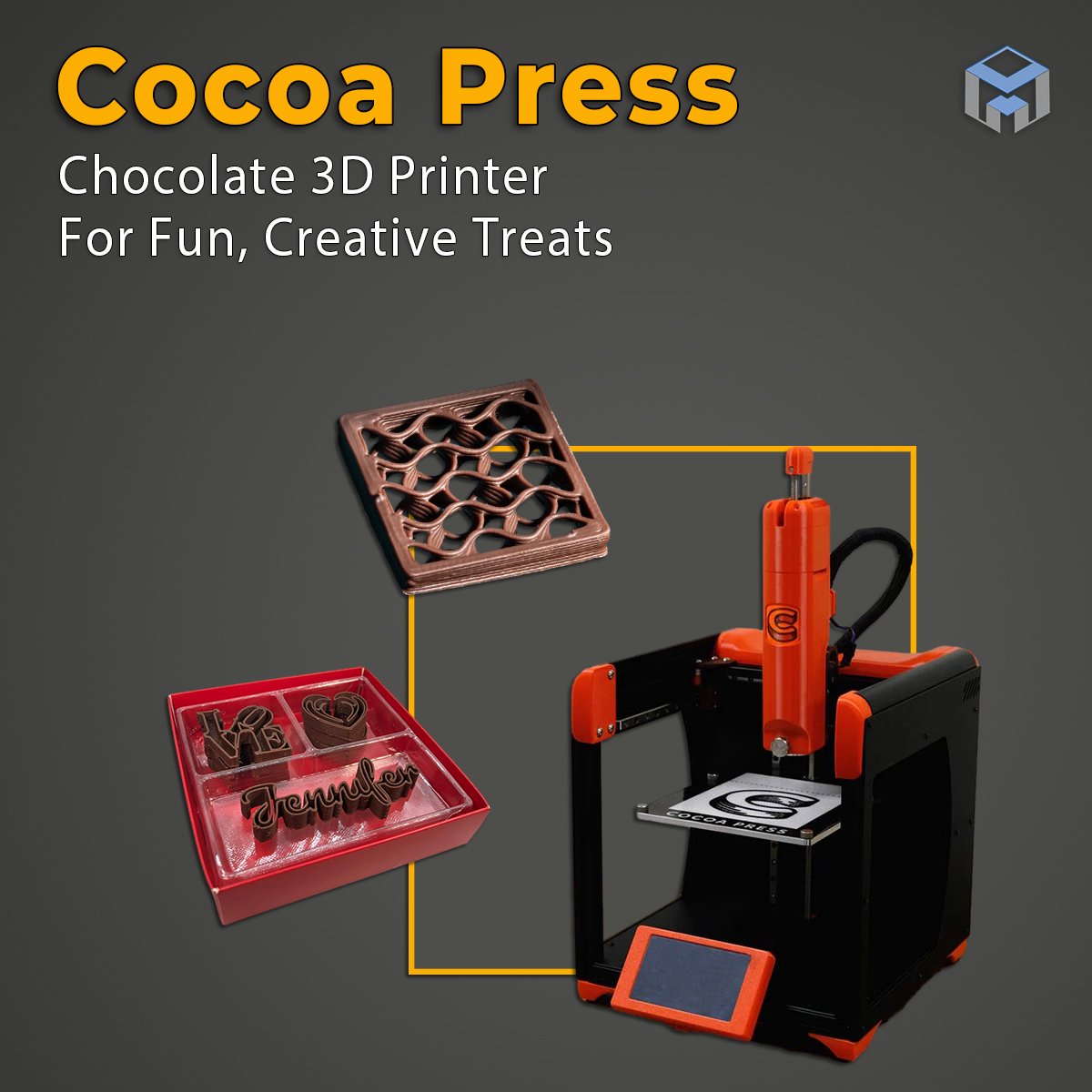Exploring the World of Multi-Color 3D Printing: IDEX, Toolhead Swapping, and Filament Swap
Multi-colour 3D printing has opened up exciting possibilities for creators and makers, allowing them to bring vibrant and detailed creations to life. In this blog post, we will take a look at the three main methods of achieving multi-colour prints: Independent Dual Extruders (IDEX), Toolhead Swapping, and Filament Swap. Each approach has its unique advantages and challenges, offering a spectrum of choices for enthusiasts to explore and enhance their 3D printing journey.
Independent Dual Extruders (IDEX)
IDEX is a popular method for multi-color 3D printing, involving the use of two separate extruders that can work independently or simultaneously. This system allows the printer to create intricate multi-color designs without the need to pause or swap filaments during the print. Each extruder can have a different color filament, enabling smooth transitions and precise layering. With IDEX, users can print mirror objects, support structures, or two-color models seamlessly.
| Pros | Cons |
|---|---|
| Seamless multi-color prints without pausing. | Higher initial cost for IDEX 3D printers. |
| Enables mirror-mode printing. | Requires calibration and setup for optimal performance. |
| Ideal for creating complex multi-color and multi-material models. | Some models may have limitations in print volume or speed. |
| No need for additional toolheads. |
Rat Rig just released their BETA IDEX Kit for the V-Core 3 which gives you dual toolheads on the same gantry. (Read our full article here)
I think mirror-mode is the biggest benefit with this setup. Achieving great looking prints from using both toolheads will require a lot of calibration and it will create a lot of waste from purging as well. Something to keep in mind….
Toolhead Swapping
Toolhead swapping is another approach to achieve multi-color prints, typically utilized in printers with a single extruder setup. This method involves manually replacing the primary extruder with different toolheads that contain pre-loaded filaments of various colors. When the printer reaches a specific layer, the user stops the print, swaps the toolhead, and resumes printing with the new color.
| Pros | Cons |
|---|---|
| Lower initial cost compared to IDEX printers. | Requires manual intervention and pausing during the print. |
| Versatile, allowing for different types of extruders (e.g., hotend, laser, CNC). | Alignment and calibration may be needed for precise color changes. |
| Can combine multiple functionalities in one machine. | Longer print times due to swapping process. |
| Suitable for those who already own a single-extruder 3D printer. | Possibility of filament waste during toolhead changes. |
The new flagship printer from Prusa, the Prusa XL, boasts the ability to utilize a total of 5 toolheads during printing.
The 2 major downsides of this setup are that you must have a duplicate set of hardware for everything and they must be identical. The second is that more power is used, the hotends still use power in standby mode.
You will also be purging filament before printing so this will create waste as well.
Filament Swap
Filament swap is a budget-friendly method for achieving multi-color prints, ideal for those who own a single extruder 3D printer and want to experiment with color variations. There are a 2 main techniques to achieving a filament swap, one very cheap and the other rather expensive and intricate.
The first technique is the cheapest and simply involves stopping the print at a specific layer, manually changing the filament to a different color, and then resuming the print. This is great when used on something like a sign that has raised letters and images on it, you can stop the print before the raised layers appear and then swap to a different color. This way, all the text and images will be a contrast with the rest of the print.
The second technique requires the assistance of separate hardware to perform the filament swap for you. A commercial version of this hardware would be something like the Palette 3 from Mosaic. It’s a unit that allows you to print up to 4 colors on any 3D printer. It measures and controls the feed of filament to your hotend.
| Pros | Cons |
|---|---|
| Suitable for single-extruder printers with minimal cost. | Requires manual pausing and intervention during the print. |
| Easy to experiment with various colors and combinations. | Prone to misalignment and color bleeding if not done accurately. |
| No complex hardware modifications required. | Longer print times due to filament swap process. |
| Limited to a few color changes per print. |
An open-source version would be the ERCF (Enraged Rabbit Carrot Feeder - check it out here) which is another great piece of hardware that rose from the Voron project. It includes all the materials and instructions that you need to build your own. It has been tested to be able to handle up to 9 different filaments giving you a great variety. As it is an open-source project with a lot of components, I recommend joining any related Facebook group and Discord to help you on your journey of building one for yourself.
The Bambu Lab X1C lets you start printing with multiple colours right out of the box. They sell their very own filament swapping system that allows up to 16 different colors which is controlled by their AMS unit.
The downside to this version is that there is a ton of filament waste. Purging each filament before use creates more waste than you think.
Multi-color 3D printing offers a world of possibilities for bringing creativity to life. Each method, be it IDEX, Toolhead Swapping, or Filament Swap, has its own strengths and limitations. IDEX provides seamless and complex multi-colour prints, Toolhead Swapping offers versatility with various functionalities, while Filament Swap allows budget-friendly experimentation. The choice depends on individual preferences, budget, and the desired complexity of the 3D prints. Whichever method you choose, multi-colour 3D printing is sure to enhance your creations and expand the horizons of your 3D printing journey.
Related Articles





















